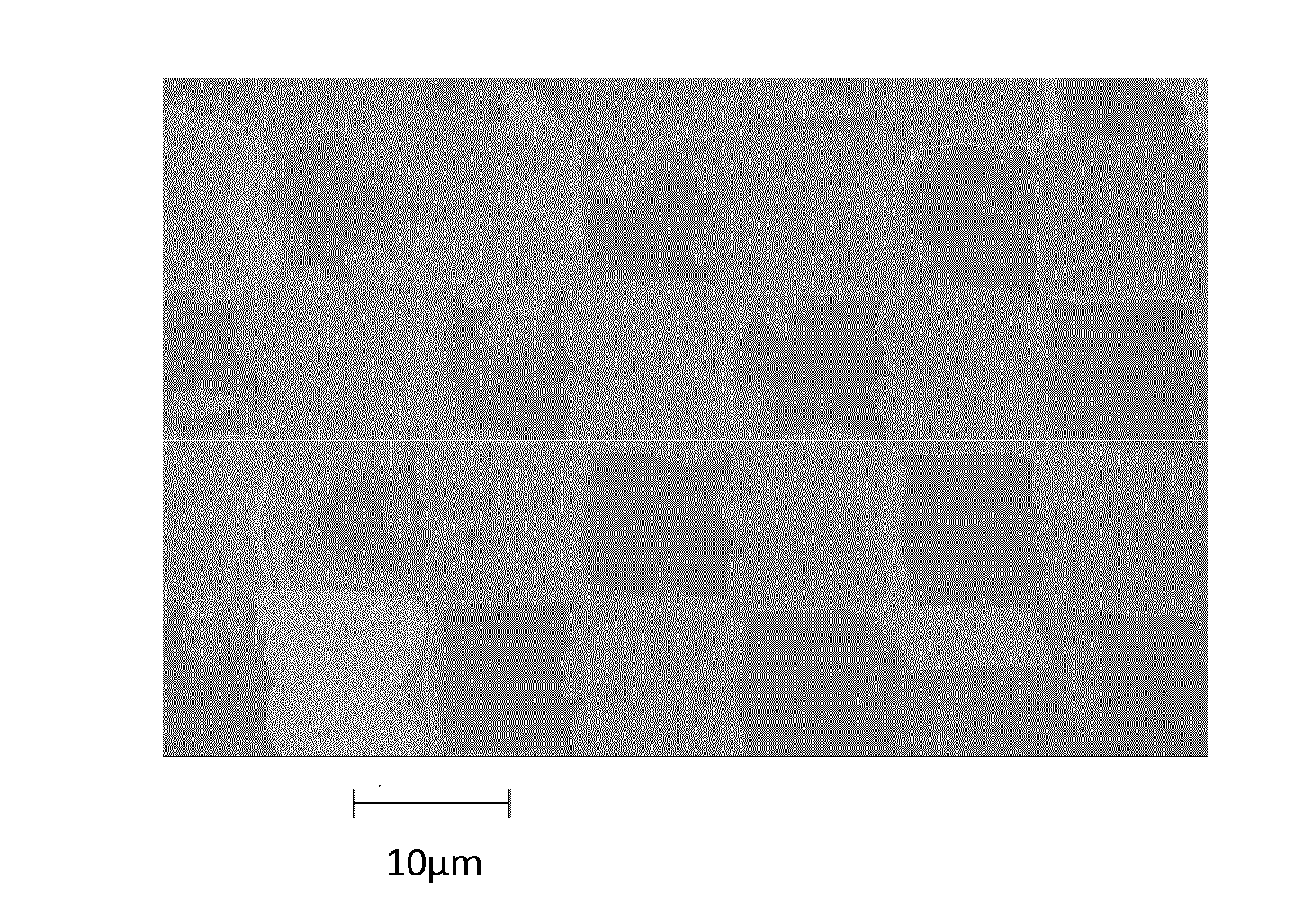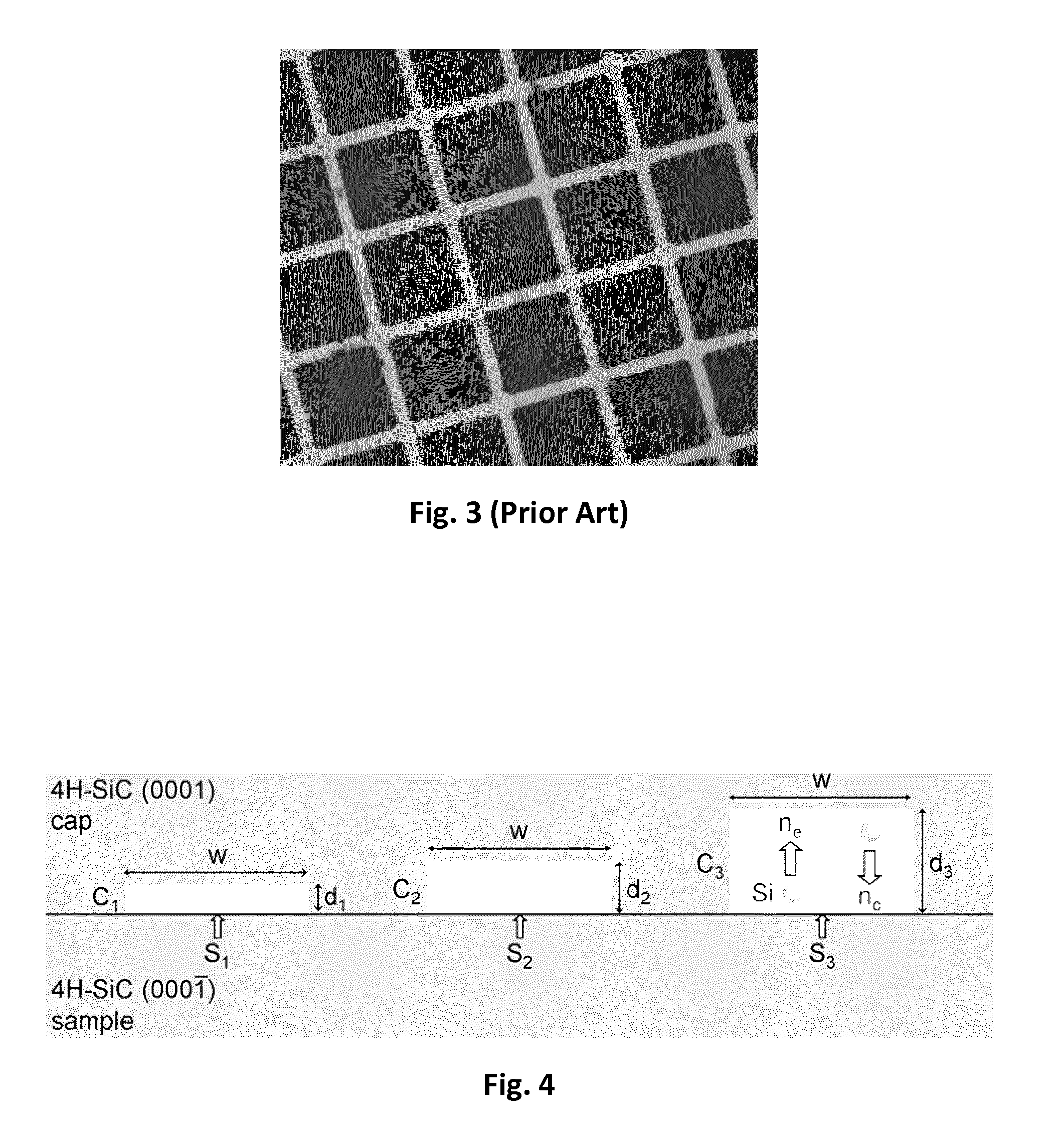Epitaxial graphene with thickness modulation
a graphene sheet and thickness modulation technology, applied in the direction of carbon-silicon compound conductors, magnetic recording, crystal growth process, etc., can solve the problems of insufficient flexibility of ito as electrode material, inability to meet the requirements of flexible display technology, and high cost of process for producing ito
- Summary
- Abstract
- Description
- Claims
- Application Information
AI Technical Summary
Benefits of technology
Problems solved by technology
Method used
Image
Examples
example
[0039]Epitaxial graphene was grown on the carbon-reach surface of SiC (000-1) substrate in ultra-high vacuum (UHV) conditions. Capping structure was also a SiC substrate. A 250 μm thick, on-axis and n-type (the doping concentration of approximately 1018 / cm3) 4H-SiC wafers with atomically flat surfaces (from NovaSiC) were used in the experiments. The wafers were diced into 3 mm wide and 10 mm long rectangular substrates and cleaned chemically. E-beam lithography, wet and dry etching processes were performed on the cap samples in order to obtain lateral height modulation with arrays of hexagonal protrusions as shown in FIG. 7a. The native oxide layers on the samples were removed in diluted HF solution prior to loading into the UHV chamber which has a base pressure of 1×10−10 mbar. The cap substrate was annealed in UHV by direct current heating during which the temperature is measured and controlled with 1° C. resolution individually. Cap-Sample was degassed overnight at around 600° C....
PUM
| Property | Measurement | Unit |
|---|---|---|
| temperature | aaaaa | aaaaa |
| temperature | aaaaa | aaaaa |
| pressure | aaaaa | aaaaa |
Abstract
Description
Claims
Application Information
 Login to View More
Login to View More - R&D
- Intellectual Property
- Life Sciences
- Materials
- Tech Scout
- Unparalleled Data Quality
- Higher Quality Content
- 60% Fewer Hallucinations
Browse by: Latest US Patents, China's latest patents, Technical Efficacy Thesaurus, Application Domain, Technology Topic, Popular Technical Reports.
© 2025 PatSnap. All rights reserved.Legal|Privacy policy|Modern Slavery Act Transparency Statement|Sitemap|About US| Contact US: help@patsnap.com



